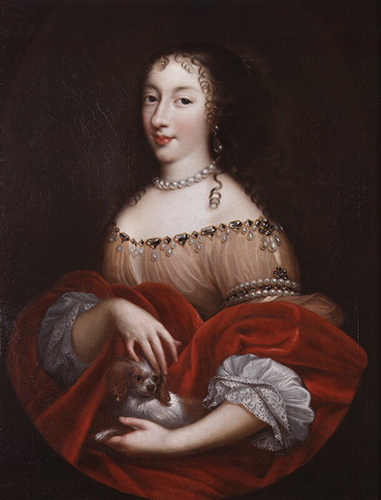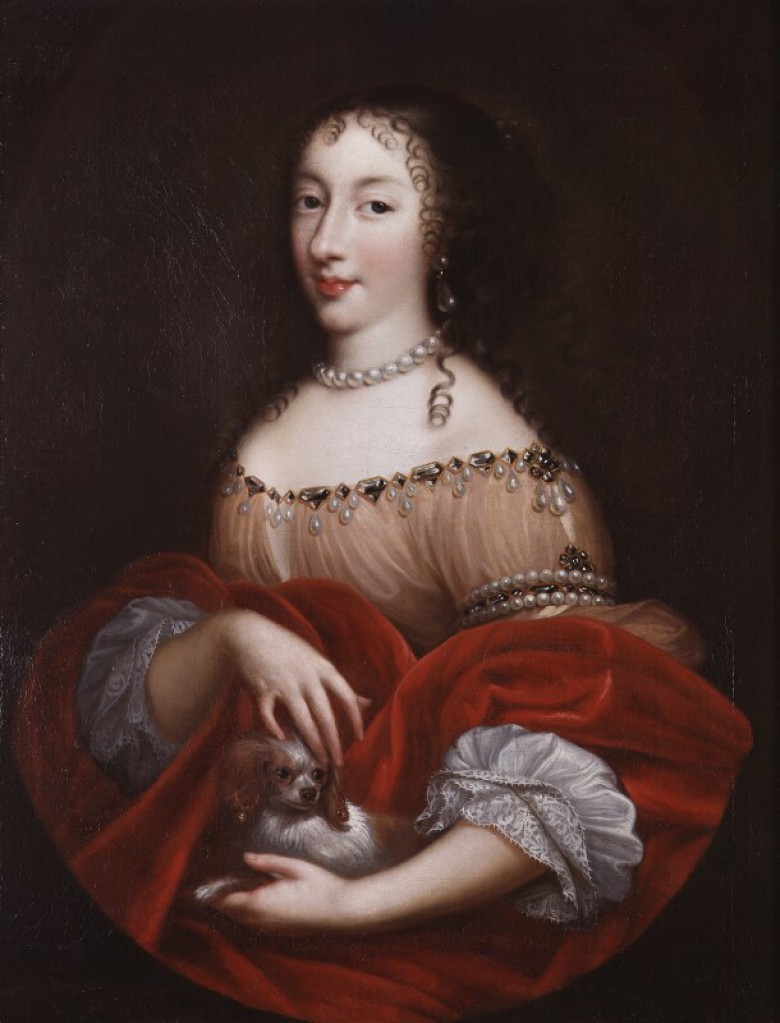16th June 2019
Princess Henrietta, the youngest child of King Charles I and his wife Henrietta Maria of France, was born in Exeter today in 1644, in circumstances unusual for a royal princess.
At the outbreak of the first English Civil War, Henrietta Maria had been at The Hague in the Netherlands ,attempting to use the Crown Jewels of England to raise money for the Royalist cause. Returning to England a year later, she eventually reached Oxford – the royal capital where Charles and his court were based. Henrietta Maria attempted to maintain the court life that she and the king had enjoyed before the start of the war, however Charles’s position was becoming increasingly unstable.
After the Battle of Cheriton in March 1644, it became clear that Oxford would no longer be safe for Henrietta Maria, who was heavily pregnant with her ninth child. That battle had been a win for the Parliamentarians, and now their forces were free to focus on the king’s stronghold of Oxford. When Henrietta Maria left her husband in April, she was unaware this would be the last she would see him.
From Oxford, she travelled from town to town, eventually reaching Exeter. Her pregnancy was a difficult and painful one, causing Charles to appeal to their most trusted physician to leave London to attend to Henrietta Maria during her difficult labour and the birth of their sixth surviving child, Henrietta.
But the queen and her new daughter were not safe. Knowing that Henrietta Maria would be a valuable bargaining chip to have over Charles, Parliamentarian forces were approaching Exeter with the intent to capture her.
Despite the difficult birth and being in considerable pain and distress, only fifteen days later Henrietta Maria was forced to flee Exeter for France. It was too dangerous to travel with her newborn child, so little Henrietta was left in the care of Anne Villiers, Countess of Morton. The baby was christened not long after her mother left, in the rites of the Church of England, as requested by her father. Charles met his new daughter for the first time in July.
Two years later, Henrietta was smuggled out of England by Anne Villiers, and she was reunited with her mother in France, where she grew up. Henrietta Maria raised her daughter as a Catholic, despite her being christened in the Church of England. In 1661 Henrietta married Philippe I, Duke of Orléans, not long after the restoration of the monarchy in England when her brother Charles II ascended to the throne. Henrietta was instrumental during the negotiations of the Secret Treaty of Dover, in which Charles II promised the French king he would convert to Catholicism. She was present in Dover when the treaty was signed in June 1670, but died later that month at the age of twenty-six.
Henrietta had complained of an intense pain in her side frequently over the previous three years and for the last two months of her life reported serious digestive problems. However on 29 June 1670 after drinking a glass of iced chicory water, Henrietta immediately cried out, ‘Ah! What a pain! What shall I do? I must be poisoned!’ and requested an antidote. Less than 10 hours later, she was pronounced dead. Despite an autopsy that denied Henrietta had been killed by poison, many, including her brother Charles II, truly believed that she had been murdered – an accusation that was reinvigorated when Henrietta’s eldest daughter Marie Louise died in 1689 at the same age and in circumstances almost identical to those of her mother.

Image: Henrietta Anne, Duchess of Orleans, possibly after Pierre Mignard, based on a work of circa 1665-1670, NPG 228, © National Portrait Gallery, London.
